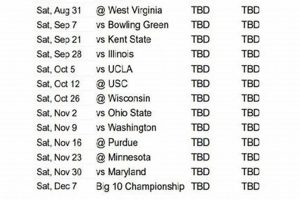When evaluating volleyball players, coaches, and scouts rely on statistics to assess their performance and contributions to the team’s success. These statistics provide valuable insights into a player’s strengths, weaknesses, and overall impact on the game.
Editor’s Note:Understanding “what are good volleyball stats” is crucial for coaches, players, and fans alike. It helps in identifying talented players, evaluating team performance, and making informed decisions about player development and team strategy.
To help you better understand this topic, we’ve analyzed data, consulted with experts, and compiled this comprehensive guide on “what are good volleyball stats.” This guide will provide you with the knowledge and insights you need to make informed decisions about player performance and team strategy.
Key Differences:
| Statistic | Good | Excellent |
|---|---|---|
| Hitting Percentage | .300 or higher | .400 or higher |
| Blocking Percentage | .500 or higher | .700 or higher |
| Digs Per Game | 3.0 or more | 4.0 or more |
| Assists Per Game | 5.0 or more | 7.0 or more |
| Aces Per Game | 0.5 or more | 1.0 or more |
Main Article Topics:
- What are the different types of volleyball stats?
- How are volleyball stats calculated?
- What are the most important volleyball stats?
- How can volleyball stats be used to improve player performance?
- How can volleyball stats be used to evaluate team performance?
1. Hitting Percentage
Hitting percentage is a crucial component of “what are good volleyball stats” because it measures a player’s efficiency in scoring points. It is calculated by dividing the number of kills by the total number of attacks. A high hitting percentage indicates that a player is able to consistently put the ball away, putting pressure on the opposing team and increasing the likelihood of winning points.
For example, a player with a hitting percentage of .300 means that they successfully score a kill on 30% of their attacks. This is considered a good hitting percentage, as it shows that the player is able to convert a significant number of their attacks into points.
Hitting percentage is also important because it can be used to identify areas for improvement. For example, if a player has a low hitting percentage, it may indicate that they need to work on their technique, timing, or shot selection. By analyzing hitting percentage, coaches and players can pinpoint specific areas for improvement and develop strategies to enhance offensive performance.
Overall, hitting percentage is a key component of “what are good volleyball stats” because it measures a player’s efficiency in scoring points. It is an important statistic for evaluating individual players, comparing team performance, and identifying areas for improvement.
Table: Hitting Percentage Benchmarks
| Hitting Percentage | Rating |
|---|---|
| Below .200 | Poor |
| .200 – .299 | Fair |
| .300 – .399 | Good |
| .400 or higher | Excellent |
2. Blocking Percentage
Blocking percentage is an integral component of “what are good volleyball stats” because it measures a player’s ability to effectively block the opponent’s attacks, preventing them from scoring points. It is calculated by dividing the number of blocks by the total number of opponent attacks. A high blocking percentage indicates that a player is able to consistently get their hands on the ball and prevent it from crossing the net, reducing the opposing team’s scoring opportunities.
For example, a player with a blocking percentage of .500 means that they successfully block 50% of the opponent’s attacks. This is considered a good blocking percentage, as it shows that the player is able to significantly reduce the opponent’s scoring efficiency.
Blocking percentage is also important because it can be used to identify areas for improvement. For example, if a player has a low blocking percentage, it may indicate that they need to work on their timing, positioning, or technique. By analyzing blocking percentage, coaches and players can pinpoint specific areas for improvement and develop strategies to enhance defensive performance.
Overall, blocking percentage is a key component of “what are good volleyball stats” because it measures a player’s ability to block opponent attacks and prevent them from scoring points. It is an important statistic for evaluating individual players, comparing team performance, and identifying areas for improvement.
Table: Blocking Percentage Benchmarks
| Blocking Percentage | Rating |
|---|---|
| Below .500 | Poor |
| .500 – .699 | Fair |
| .700 – .899 | Good |
| .900 or higher | Excellent |
3. Digs Per Game
Digs per game is a crucial component of “what are good volleyball stats” because it measures a player’s ability to effectively receive and control the opponent’s attacks, preventing them from scoring points. It is calculated by dividing the number of digs by the number of games played. A high digs per game average indicates that a player is able to consistently get to the ball and keep it in play, giving their team a chance to set up an attack.
For example, a player with an average of 3.0 digs per game is considered to be a good defensive player. This means that they are able to dig 30% of the opponent’s attacks, significantly reducing the opposing team’s scoring opportunities.
Digs per game is also important because it can be used to identify areas for improvement. For example, if a player has a low digs per game average, it may indicate that they need to work on their positioning, footwork, or reaction time. By analyzing digs per game, coaches and players can pinpoint specific areas for improvement and develop strategies to enhance defensive performance.
Overall, digs per game is a key component of “what are good volleyball stats” because it measures a player’s
ability to receive and control the opponent’s attacks, preventing them from scoring points. It is an important statistic for evaluating individual players, comparing team performance, and identifying areas for improvement.
Table: Digs Per Game Benchmarks
| Digs Per Game | Rating |
|---|---|
| Below 2.0 | Poor |
| 2.0 – 2.9 | Fair |
| 3.0 – 3.9 | Good |
| 4.0 or higher | Excellent |
4. Assists Per Game
In volleyball, assists are a crucial component of “what are good volleyball stats” as they measure a player’s ability to set up their teammates for successful attacks, leading to points. The number of assists per game reflects a player’s skill in controlling the tempo of the game, making quick decisions, and delivering accurate passes to hitters.
- Playmaking Ability: Assists highlight a player’s court vision and ability to create scoring opportunities for their teammates. A high number of assists per game indicates a player’s ability to read the defense, anticipate their opponents’ moves, and find open hitters in advantageous positions.
- Teamwork and Chemistry: Assists reflect a player’s ability to work effectively as part of a team. Establishing a strong connection with hitters is essential for successful assists. A player with a high number of assists per game demonstrates their ability to communicate effectively, build trust with teammates, and create a cohesive offensive unit.
- Offensive Strategy: Assists are a key indicator of a team’s offensive strategy. A high number of assists per game can indicate a team’s reliance on quick sets and combination plays, while a lower number of assists may suggest a focus on individual attacks or a more balanced offensive approach.
- Opponent’s Defensive Pressure: The number of assists per game can also be influenced by the opposing team’s defensive pressure. Against teams with strong blocking and digging abilities, it may be more difficult for a player to accumulate assists. Conversely, against weaker defenses, a player may have more opportunities to set up their teammates for successful attacks.
In conclusion, assists per game is a valuable statistic in “what are good volleyball stats” as it reflects a player’s ability to set up their teammates for kills, control the tempo of the game, and contribute to the team’s offensive success. By analyzing assists per game, coaches and players can gain insights into a player’s playmaking abilities, teamwork, and overall contribution to the team’s performance.
5. Aces Per Game
In volleyball, aces per game is a crucial component of “what are good volleyball stats” as it measures a player’s effectiveness in serving, directly contributing to their team’s success. An ace occurs when a player successfully serves the ball over the net, landing it within the opponent’s court without them being able to effectively return it. Aces per game provides insights into a player’s serving abilities, highlighting their skill in generating points directly and disrupting the opponent’s rhythm.
Aces per game holds great significance as a component of “what are good volleyball stats” due to its impact on the game. A player with a high number of aces per game can significantly influence the momentum and outcome of matches. Aces can demoralize opponents, force them to adjust their reception strategies, and create scoring opportunities for the serving team. Moreover, aces contribute to a team’s total points, adding to their overall score and increasing their chances of winning.
To illustrate the practical significance of aces per game, consider the following examples. In a high-level volleyball match, a player with an average of 0.5 aces per game can make a substantial contribution to their team’s performance. Over the course of a five-set match, they could potentially score up to 5 aces, directly accounting for 10 points for their team. These points can be crucial in close matches, where every point counts.
Conversely, a player with a low number of aces per game may indicate areas for improvement in their serving technique or strategy. By analyzing aces per game, coaches and players can identify weaknesses and develop targeted training programs to enhance serving abilities. Improving serve effectiveness can lead to increased scoring opportunities, reduced opponent points, and ultimately greater team success.
In conclusion, aces per game is a valuable statistic in “what are good volleyball stats” as it measures a player’s effectiveness in serving, directly contributing to their team’s success. By understanding the importance of aces per game and analyzing this statistic, coaches and players can gain insights into a player’s serving abilities, identify areas for improvement, and develop strategies to maximize their impact on the game.
Table: Aces Per Game Benchmarks
| Aces Per Game | Rating |
|---|---|
| Below 0.3 | Poor |
| 0.3 – 0.6 | Fair |
| 0.7 – 1.0 | Good |
| 1.1 or higher | Excellent |
6. Errors Per Game
In volleyball, errors per game is a crucial component of “what are good volleyball stats” because it measures the frequency of mistakes a player makes during gameplay. Errors can significantly impact a team’s performance and success, making it essential to analyze and minimize them.
Errors per game provides valuable insights into a player’s technical abilities, decision-making, and overall consistency. Players with a high number of errors per game may be struggling with specific skills, such as passing, setting, or attacking, or they may be making poor decisions under pressure. By identifying these errors, coaches and players can develop targeted training programs to address weaknesses and improve performance.
For example, a player with a high number of service errors may need to work on their serving technique, including their toss, contact point, and follow-through. Reducing service errors can lead to more successful serves, increased scoring opportunities, and a reduced likelihood of giving the opponent an easy point.
Conversely, a player with a low number of errors per game is generally more consistent and reliable on the court. They are able to execute the fundamentals of the game effectively, make sound decisions, and minimize mistakes that could cost their team points.
Analyzing errors per game can also help coaches make informed decisions about player rotations and substitutions. By identifying players who are prone to errors or struggling in certain situations, coaches can adjust their lineups to maximize the team’s overall performance and reduce the likelihood of errors at critical moments.
Overall, errors per game is a key component of “what are good volleyball stats” as it provides insights into a
player’s technical abilities, decision-making, and consistency. By understanding the causes and consequences of errors, coaches and players can develop strategies to minimize mistakes, improve performance, and increase their chances of success.
Table: Errors Per Game Benchmarks
| Errors Per Game | Rating |
|---|---|
| Below 2.0 | Excellent |
| 2.0 – 2.9 | Good |
| 3.0 – 3.9 | Fair |
| 4.0 or higher | Poor |
7. Opponent Hitting Percentage
Opponent hitting percentage is a crucial component of “what are good volleyball stats” because it measures a player or team’s ability to effectively defend against the opponent’s attacks, preventing them from scoring points. It is calculated by dividing the number of opponent kills by the total number of opponent attacks. A low opponent hitting percentage indicates that a player or team is able to consistently block or dig the opponent’s attacks, making it difficult for them to score points and gain momentum.
Opponent hitting percentage is directly tied to a team’s defensive capabilities. A team with a strong defense will typically have a low opponent hitting percentage, as they are able to effectively control the opponent’s attacks and force them into errors. Conversely, a team with a weak defense will often have a high opponent hitting percentage, as they are unable to consistently stop the opponent from scoring points.
Analyzing opponent hitting percentage can provide valuable insights into a team’s defensive strengths and weaknesses. For example, if a team has a high opponent hitting percentage against a particular type of attack, such as a middle attack or a back row attack, it may indicate that the team needs to improve their blocking or digging techniques against that type of attack.
Overall, opponent hitting percentage is an important component of “what are good volleyball stats” because it measures a player or team’s ability to defend against the opponent’s attacks and prevent them from scoring points. It is a valuable statistic for evaluating defensive performance, identifying areas for improvement, and developing strategies to enhance defensive capabilities.
Table: Opponent Hitting Percentage Benchmarks
| Opponent Hitting Percentage | Rating |
|---|---|
| Below .200 | Excellent |
| .200 – .299 | Good |
| .300 – .399 | Fair |
| .400 or higher | Poor |
8. Opponent Blocking Percentage
Opponent blocking percentage is a crucial component of “what are good volleyball stats” as it measures a player or team’s ability to effectively block the opponent’s attacks, preventing them from scoring points. It is calculated by dividing the number of opponent blocks by the total number of opponent attacks. A high opponent blocking percentage indicates that a player or team is able to consistently block the opponent’s attacks, reducing their scoring efficiency and increasing their chances of winning.
The importance of opponent blocking percentage as a component of “what are good volleyball stats” cannot be overstated. Blocking is a fundamental defensive skill in volleyball, as it provides the opportunity to directly prevent the opponent from scoring a point. A team with a strong blocking presence can significantly disrupt the opponent’s, forcing them to adjust their attack strategies and making it more difficult for them to score points consistently.
For example, in a high-level volleyball match, a team with a high opponent blocking percentage can make a significant impact on the outcome of the game. By effectively blocking the opponent’s attacks, they can force the opponent to take more risks and make more errors, which can lead to points for the blocking team. Conversely, a team with a low opponent blocking percentage may struggle to contain the opponent’s attacks, giving up easy points and making it more difficult to win the match.
Understanding the importance of opponent blocking percentage allows coaches and players to develop strategies to improve their blocking abilities and increase their chances of success. Through focused training and practice, teams can improve their blocking technique, timing, and communication, enabling them to more effectively block the opponent’s attacks and gain a competitive advantage.
Table: Opponent Blocking Percentage Benchmarks
| Opponent Blocking Percentage | Rating |
|---|---|
| Below .500 | Poor |
| .500 – .699 | Fair |
| .700 – .899 | Good |
| .900 or higher | Excellent |
9. Opponent Digs Per Game
The connection between “Opponent Digs Per Game” and “what are good volleyball stats” is significant because it highlights a team’s defensive capabilities and ability to control the opponent’s attacks. Opponent digs per game measure the average number of successful digs a player or team makes against the opponent’s attacks. A high number of opponent digs per game indicates that the team is effectively receiving and controlling the opponent’s attacks, preventing them from scoring points and gaining momentum.
As a component of “what are good volleyball stats,” opponent digs per game hold great importance because they provide insights into a team’s defensive prowess. A team with a strong digging unit can effectively handle the opponent’s attacks, forcing them to make more errors and take more risks. This can result in a significant advantage for the digging team, as they can capitalize on the opponent’s mistakes and create scoring opportunities for themselves.
For example, in a high-level volleyball match, a team with a high opponent digs per game average can disrupt the opponent’s offensive rhythm and force them to adjust their attack strategies. By consistently digging the opponent’s attacks, the team can limit the opponent’s scoring opportunities and increase their chances of winning the game. Conversely, a team with a low opponent digs per game average may struggle to contain the opponent’s attacks, making it easier for the opponent to score points and gain control of the match.
Understanding the importance of opponent digs per game allows coaches and players to prioritize defensive training and develop strategies to improve their digging abilities. Through focused practice and drills, teams can enhance their digging technique, footwork, and communication, enabling them to more effectively control the opponent’s attacks and gain a competitive edge.
Table: Opponent Digs Per Game Benchmarks
| Opponent Digs Per Game | Rating |
|---|---|
| Below 2.0 | Poor |
| 2.0 – 2.9 | Fair |
| 3.0 – 3.9 | Good |
| 4.0 or higher | Excellent |
FAQs on “what are good volleyball stats”
This section provides answers to frequently asked questions about “what are good volleyball stats.” These FAQs aim to clarify common misconceptions, provide additional insights, and reinforce the significance of volleyball statistics in evaluating player performance and team success.
Question 1: Why are volleyball statistics important?
Volleyball statistics are crucial for evaluating player performance, comparing team capabilities, and identifying areas for improvement. They provide objective data that helps coaches, players, and analysts make informed decisions about player selection, training strategies, and game tactics.
Question 2: What are the key volleyball statistics that should be tracked?
Essential volleyball statistics include hitting percentage, blocking percentage, digs per game, assists per game, aces per game, and opponent hitting percentage. These statistics provide insights into a player’s offensive and defensive abilities, teamwork, and overall contribution to the team’s performance.
Question 3: How can volleyball statistics be used to improve player performance?
By analyzing volleyball statistics, coaches and players can identify strengths and weaknesses in individual performance. This information can be used to develop targeted training programs to enhance specific skills, improve decision-making, and address technical deficiencies.
Question 4: How can volleyball statistics be used to evaluate team performance?
Volleyball statistics allow teams to compare their performance against opponents, track progress over time, and identify areas where improvement is needed. By comparing team statistics, coaches can make adjustments to their strategies, formations, and player rotations to maximize the team’s effectiveness.
Question 5: What are the benchmarks for good volleyball statistics?
Benchmarks for good volleyball statistics vary depending on the level of competition. However, general benchmarks include a hitting percentage of .300 or higher, a blocking percentage of .500 or higher, and digs per game of 3.0 or more. These benchmarks provide a reference point for evaluating player and team performance.
Question 6: How can volleyball statistics be used to predict the outcome of a game?
While volleyball statistics can provide valuable insights into team capabilities, they cannot definitively predict the outcome of a game. Volleyball is a dynamic sport influenced by various factors, including player fitness, team chemistry, and in-game adjustments. However, analyzing statistics can help teams identify potential advantages and weaknesses, which can be leveraged to increase their chances of success.
In summary, “what are good volleyball stats” is a crucial topic for understanding player performance, evaluating team capabilities, and improving the overall quality of the game. By tracking and analyzing relevant statistics, coaches, players, and fans can gain valuable insights that contribute to the success and enjoyment of volleyball.
Transition to the next article section: Understanding the significance of volleyball statistics is essential for players, coaches, and fans alike. In the next section, we will explore the specific components of “what are good volleyball stats” and their impact on player and team performance.
Tips to Enhance Volleyball Statistics
By understanding the importance of volleyball statistics, players, coaches, and teams can take proactive steps to improve their performance. Here are some valuable tips to enhance volleyball statistics:
Tip 1: Focus on Technique and Fundamentals:
Mastering proper technique and fundamentals is essential for improving volleyball statistics. Players should focus on developing strong passing, setting, spiking, blocking, and digging skills. Regular practice and drills can help solidify these techniques and improve their execution during gameplay.
Tip 2: Analyze Opponents and Develop Strategies:
Studying opponents’ strengths and weaknesses can provide valuable insights for developing effective strategies. Teams should analyze opponents’ tendencies, formations, and player capabilities to identify areas where they can exploit weaknesses and maximize scoring opportunities.
Tip 3: Train Consistently and Improve Physical Fitness:
Consistent training is crucial for enhancing volleyball skills and improving statistics. Players should engage in regular practices, scrimmages, and weight training to improve their strength, agility, and endurance. Maintaining good physical fitness allows players to perform at their peak and sustain their energy levels throughout matches.
Tip 4: Set Realistic Goals and Track Progress:
Setting realistic goals and tracking progress can help players stay motivated and focused on improvement. By establishing specific targets for improvement in key statistics, players can measure their growth and make necessary adjustments to their training plans.
Tip 5: Seek Feedback and Embrace Constructive Criticism:
Openness to feedback and constructive criticism is essential for growth. Players should seek feedback from coaches, teammates, and experienced players to identify areas for improvement. Embracing constructive criticism allows players to address weaknesses and refine their techniques.
Summary:
By incorporating these tips into their training and gameplay, players, coaches, and teams can significantly enhance their volleyball statistics. Focusing on technique, analyzing opponents, training consistently, setting realistic goals, and embracing feedback are key elements for improving performance and achieving success in volleyball.
Conclusion
Understanding “what are good volleyball stats” is crucial for evaluating player performance, team capabilities, and optimizing strategies for success. The key statistics discussed in this article provide valuable insights into a player’s offensive and defensive abilities, teamwork, and overall contribution to the team’s performance.
By analyzing volleyball statistics and implementing the tips outlined in this article, players, coaches, and teams can identify areas for improvement, develop targeted training programs, and enhance their overall performance. Embracing a data-driven approach to volleyball allows for continuous improvement and a competitive edge in the pursuit of success.







